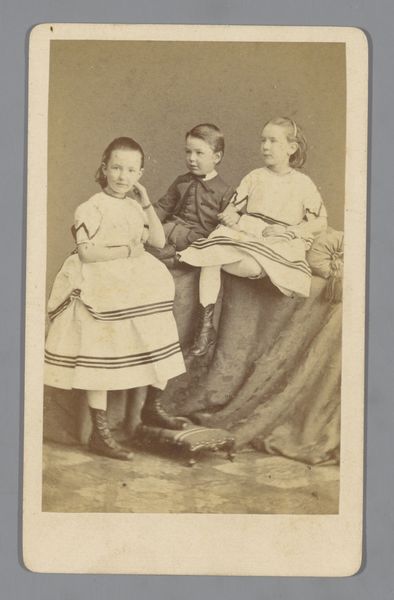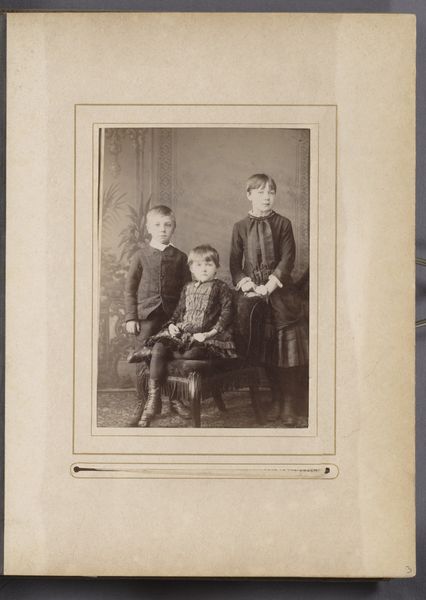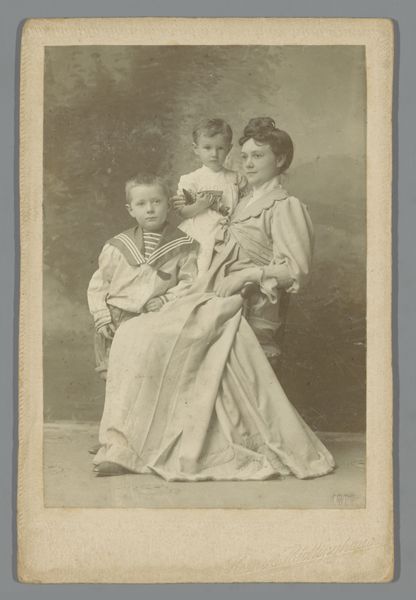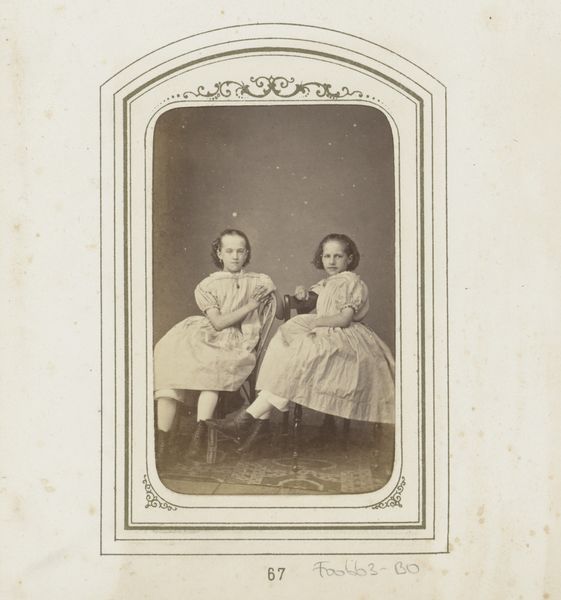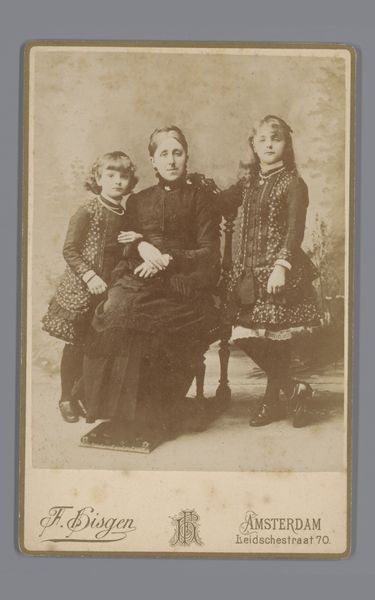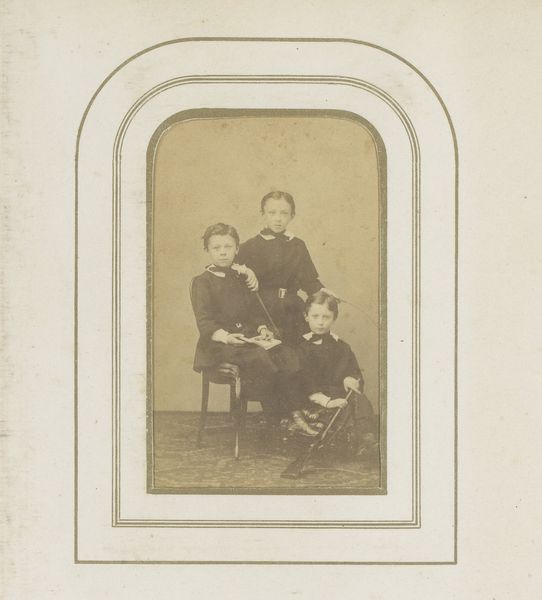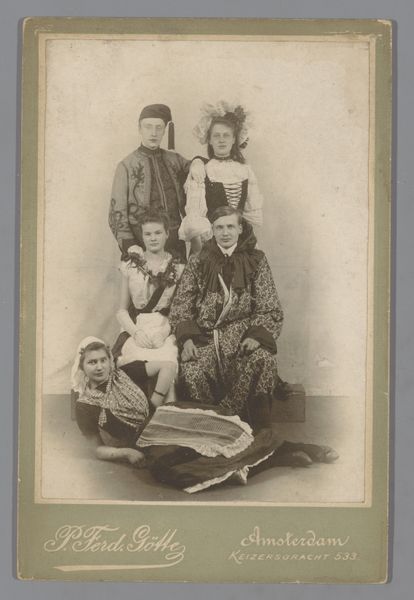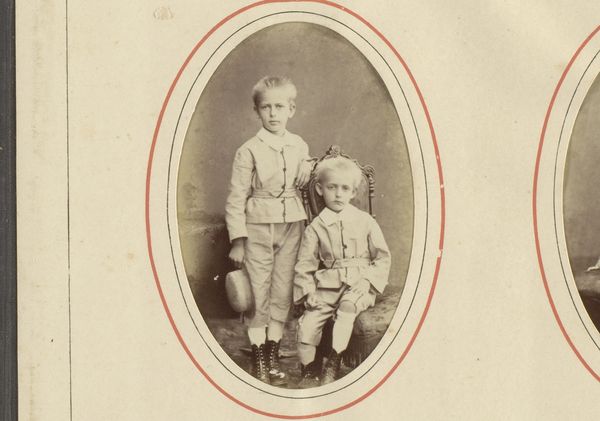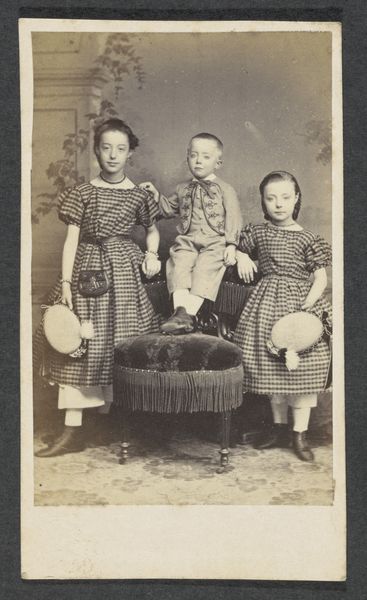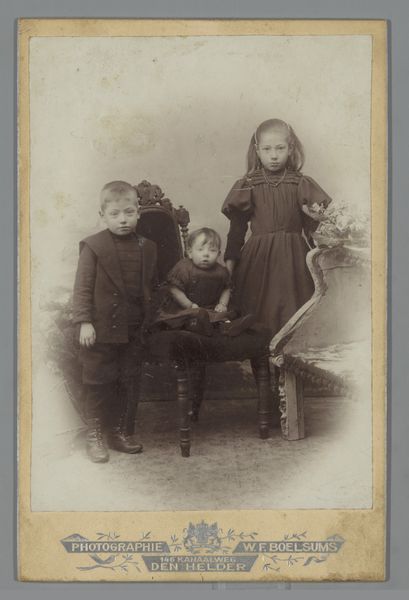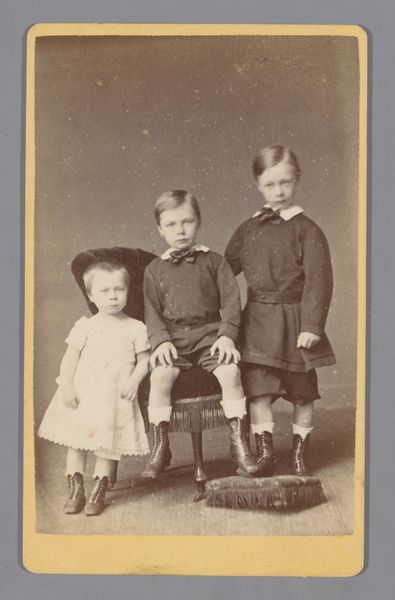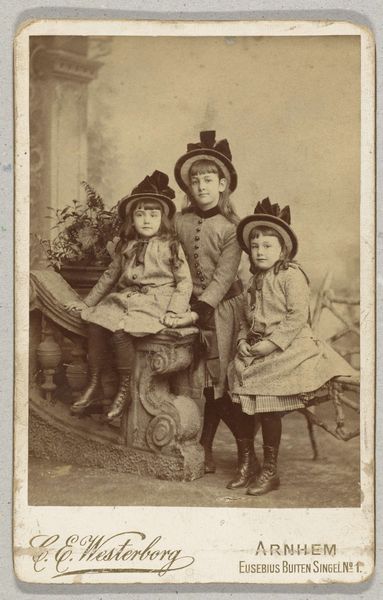
photography
#
portrait
#
pictorialism
#
photography
#
historical photography
#
19th century
#
genre-painting
Dimensions: height 163 mm, width 108 mm
Copyright: Rijks Museum: Open Domain
Curator: Looking at "Groepsportret van de familie Piedelen," a photograph likely captured between 1886 and 1895 by Jean-Marie Pipaud, I'm struck by the solemnity of these children. Editor: Yes, the sepia tones contribute to the weightiness, don't they? The light catches their faces unevenly, which, paired with the composition—the slightly raised, ornate background and the props—creates an intriguing arrangement. It’s a study in geometric shapes contrasting with soft focus. Curator: Exactly. And that uneven light, I think, contributes to the symbolic depth. The figures are posed quite formally, which was common for such portraits, of course, yet each has their distinct gaze—almost confronting. Their clothing, while seemingly uniform, subtly differentiates them within their social standing, don’t you think? Editor: Absolutely, I see how the formal setting speaks to societal expectations. Yet formally, notice the photographer’s control over contrast, and depth. These choices guide our reading; our gaze travels, held, by this contrast between background, clothing, and light on skin. I wonder whether the muted color palette reinforces feelings, lending a solemn quality to what would otherwise just be a group of children posing? Curator: It definitely adds layers. I find it interesting that the hoop held by the girl on the left feels almost like a talisman, or perhaps a premonition—circles within circles symbolizing life, connection, continuity, perhaps even constraint, given the somber mood. Editor: Interesting. Perhaps, it’s not about what is but how—how formal devices carry significance, even a prop like a hoop contributes in the formal unity; and those repetitions, are those semiotic signals, the cultural context in which a particular kind of gaze prevails—staged, almost? Curator: Precisely! It's a moment suspended, capturing a family at a certain point in history—their individual narratives intersecting with a collective social and cultural story. Editor: This image truly makes me reflect how the very act of viewing isn’t ever objective; rather, subjective because the work demands, even directs it. Curator: A reminder that portraits carry not only likeness, but also cultural memory, beautifully rendered through photography's unique language.
Comments
No comments
Be the first to comment and join the conversation on the ultimate creative platform.

